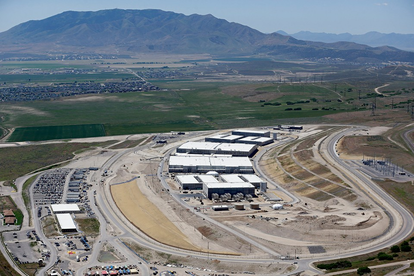Menu
Facial recognition ushers in the age of surveillance |

Smile! You just got recognized.
A hidden camera snaps your picture, ties it to databases that reveal your name, your interests, how much money you make, whether you’ve ever been arrested or convicted, even your political and religious affiliations. The viewer – a sales clerk, a police officer, or a stranger in the business of collecting and selling personal information – knows much more about you than you know about them. That’s the scenario presented by security expert Bruce Schneier in a September 29, 2015, article on Forbes. It’s one thing for facial-recognition technology to be used to identify wanted criminals, but it’s another thing for the technology to be used by an oppressive government to crack down on dissidents – or merely to arrest people who disagree with them. Schneier predicts that in the not-too-distant future, machines will be more skilled at identifying people than people are at identifying each other. Combining facial recognition with photo databases is a gold mine of personal information for the corporations and governments that have access to those databases as well as to the many other massive stores of personal information currently being collected. Already there are billboards that identify the sex of the person viewing them and display an ad intended for that sex. Schneier points out that an industry has developed based on scanning the license plates of vehicles, tying the plate numbers to date/time/location information, and selling the resulting database to all comers. For example, a company called Vigilant Solutions states that it performs 70 million license plate scans each month and sells the information to law enforcement agencies, although this and other companies with license-plate databases are reportedly planning to offer their products to private companies. An effort initiated by the U.S. Department of Commerce in 2014 to convince the surveillance industry to work with privacy organizations on voluntary guidelines for the technology’s use collapsed recently when all the privacy groups backed out. The organizations claim the industry was unwilling to agree to limit nonconsensual facial recognition. In a June 16, 2015, article the Electronic Frontier Foundation’s Jennifer Lynch reports on the decision in which the EFF was joined by eight other privacy groups. Facial recognition is only one tool in the surveillance arsenal As Walter Kirn writes in the November 2015 edition of The Atlantic, most people think they lead “a boring life” and don’t believe government and corporate surveillance poses any threat to them. But consider that Google, Facebook, the U.S. government, and other possessors of huge data mines could know more about our likes, dislikes, thoughts, and actions than we know ourselves. Kirn points out that it is a short step from having this insight into our nature and using the information to persuade/coerce us into making a purchase, signing a contract, or agreeing to a war. Exhibit A supporting the contention that surveillance of U.S. citizens has reached unprecedented levels is the National Security Agency’s Utah Data Center (pictured above), which Kirn describes as “a multibillion-dollar facility clearly designed to unscramble, analyze, and store imponderable masses of information whose ultimate uses were unknowable.” The center consumes enough energy to keep a city of 10,000 residents powered, according to Kirn, and when fully operational will require 2 million gallons of water each day to cool its massive array of servers. It has the potential to serve as an “infinity box,” storing all the digital data generated in the world, past, present, and far into the future. Kirn’s point is that if you feel like you’re being watched, you’re absolutely correct. As the title of his article puts it, if you’re not paranoid, you’re crazy. To make his point, Kirn recounts sending his wife a text wishing her “good night, don’t let the bedbugs bite” when she was traveling. The next morning, there was an email in his inbox from an exterminator offering to help him with his bedbug problem. Years ago, John Prine wrote a song called “Blow up Your TV.” I wonder whether Mr. Prine isn’t pondering a revision: “Blow up Your Smart Phone.” |
